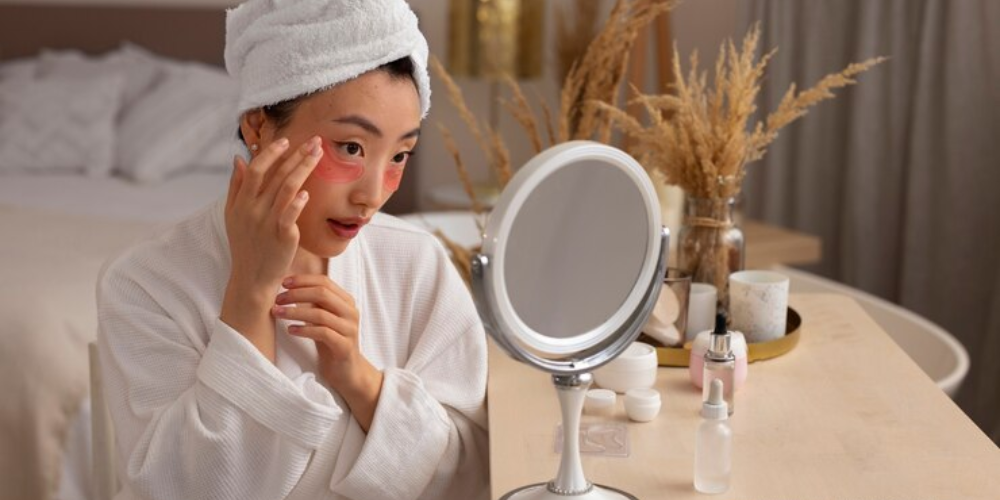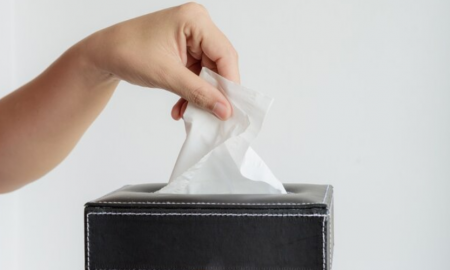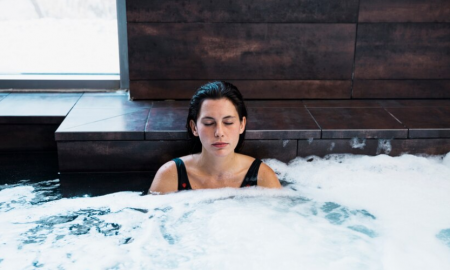
Maximizing Your Skincare Routine: Learn How to Layer Skincare Products

Navigating the realm of skincare can feel daunting, especially with an array of products to apply. However, fear not! Learning how to layer skincare products correctly unleashes their full potential, ensuring your skin receives optimal benefits from each treatment. This comprehensive guide simplifies the process, turning your skincare routine into a rewarding and effective experience.
Understanding the Importance of Layering
Imagine your skin as a field. For seeds (active ingredients) to flourish, the soil (skin) needs proper preparation. Layering skincare creates the ideal environment for these ingredients to be absorbed. When done correctly, it allows each product to function at its best, addressing your specific skin concerns.

Image by artursafronovvvv on freepik | Skincare layering optimizes ingredient absorption for maximum effectiveness.
The Golden Rule of Layering
When it comes to layering skincare, consistency is key. A general rule of thumb is to apply products from thinnest to thickest. Lighter formulas, like cleansers and toners, penetrate the skin more. Following with heavier textures, like moisturizers and oils, locks in the benefits of the previous layers.
The Essential Steps: Building Your Skincare Routine
How to layer skincare depends on your unique needs. But, a basic routine includes these steps:
- Step 1: Cleansing Washing your face is the foundation of any skincare routine. A gentle cleanser removes dirt, oil, and makeup, creating a clean canvas for next products. Opt for cleansers that are alcohol-free and non-abrasive to avoid stripping away natural oils.
- Step 2: Toning (Optional) Toners can offer extra benefits, but they aren’t essential for everyone. They can remove leftover impurities after cleansing and balance the skin’s pH. For dry or sensitive skin, choose hydrating toners containing hyaluronic acid or rose water. Oily skin types may benefit from toners with astringent properties, like witch hazel or salicylic acid.
- Step 3: Spot Treatment (Optional) If you’re battling blemishes, incorporate a spot treatment after cleansing or toning. These concentrated formulas target specific areas with ingredients like benzoyl peroxide or salicylic acid to combat acne.
- Step 4: Serums Powerhouses of active ingredients, serums deliver a concentrated dose to address various concerns. Vitamin C serums brighten skin, while hyaluronic acid serums provide intense hydration. Apply a pea-sized amount to your face and neck after cleansing and toning.

Image by freepik | Serums’ concentrated doses target skin concerns. Vitamin C brightens, and hyaluronic acid hydrates.
Advanced Steps: Tailoring Your Routine
For specific skincare goals, consider adding these steps to your layering routine:
- Step 5: Retinol and Retinoid Treatments Retinol and retinoids stimulate cell turnover and collagen production, promoting smoother, younger-looking skin. These products are thicker and should be applied after serums. It’s crucial to begin with a low concentration and increase frequency to minimize irritation. Remember, retinol increases sun sensitivity, so incorporate it into your nighttime routine only.
- Step 6: Eye Cream (Optional) The delicate under-eye area is prone to dryness and wrinkles. Eye creams offer targeted hydration and may contain ingredients like peptides or antioxidants to combat these concerns. Apply a small amount using your ring finger after your serums or retinol treatment.
- Step 7: Moisturizer Moisturizers lock in hydration and create a protective barrier on the skin’s surface. Choose a moisturizer based on your skin type: dry skin benefits from thicker formulas with ceramides or shea butter, while oily skin prefers lightweight, oil-free options with hyaluronic acid. Apply moisturizer after your serums or retinol treatment.
- Step 8: Face Oils (Optional) Face oils provide an extra layer of nourishment, particularly for dry skin. Apply a few drops after your moisturizer to lock in hydration. Argan, coconut, or avocado oil are popular choices, offering fatty acids that nourish the skin.
- Step 9: Sunscreen (Essential) Sunscreen is the ultimate non-negotiable step in any skincare routine. It protects your skin from harmful UV rays that cause premature aging and skin cancer. Apply a broad-spectrum sunscreen with SPF 30 or higher every day, even on cloudy days. Sunscreen should always be the last step in your daytime layering routine.

Image by freepic.diller on freepik | Sunscreen is a vital step in your skincare routine, shielding your skin from harmful UV rays.
Why Order Matters: The Science Behind Layering
So, why exactly does the order of application matter in layering skincare? There are three key reasons:
- Absorption: Applying products from thinnest to thickest allows for optimal absorption of active ingredients. Thicker formulas can create a barrier that hinders the penetration of lighter products applied earlier.
- Consistency: (Continued) A watery toner followed by a heavy cream might disrupt the even application of both products.
- pH Balance: The skin has a acidic pH. Certain skincare products, like chemical exfoliants, rely on a specific pH range to function . Layering in the correct order helps maintain this balance, allowing all products to work as intended.
The Takeaway: A Layered Approach to Radiant Skin
Layering skincare empowers you to create a personalized routine that addresses your unique needs. By following these steps and understanding the science behind the order, you can unlock the full potential of your skincare products. Remember, consistency is key! With dedication to a well-layered routine, you’ll be on your way to achieving healthy, radiant skin that glows from within.
Consulting a Dermatologist
While this guide provides a roadmap for layering skincare, it’s not a one-size-fits-all solution. A dermatologist can assess your skin type and recommend the most effective products and layering routine for your specific concerns. Don’t hesitate to seek professional guidance to create a personalized plan for achieving your skincare goals.
More in Skin Care
-
`
How Long Does a Non Surgical Nose Job Last?
The allure of a sculpted nose without the downtime of traditional surgery has captivated many. Non-surgical rhinoplasty, often dubbed a “liquid...
August 11, 2024 -
`
How to Plan a Trip to Italy and Greece
Italy and Greece stand out as two of Europe’s premier travel destinations, each offering a unique blend of historical grandeur, stunning...
July 31, 2024 -
`
Are Makeup Wipes Bad for Your Skin?
In the quest for quick and convenient skincare, makeup wipes often seem like a miracle solution. However, if you’re wondering, Are...
July 26, 2024 -
`
How to Do Ab Workouts During Pregnancy?
Maintaining core strength is vital, but can you do ab workouts while pregnant? This question is common among expectant mothers eager...
July 19, 2024 -
`
5 Seamless Ways to Minimize BBL Scars
Undergoing a Brazilian Butt Lift (BBL) is an exciting decision for enhancing your body contour. However, BBL scars can be a...
July 12, 2024 -
`
Best Places for Birthday Party Fun for All Ages
Celebrating your birthday at an exciting venue can add that extra spark to your special day, whether you’re with family, friends,...
July 2, 2024 -
`
Skincare for Sensitive Skin: Top 6 Products to Try
Taking care of sensitive skin can be a challenge. With so many products on the market, finding the right ones that...
June 28, 2024 -
`
How to Build Muscles & Gain Mass After 50
Are you wondering how to build muscle mass after 50? You are not alone. Many people think that hitting the big...
June 20, 2024 -
`
How to Speed Up Your Nose Job Recovery Time
Undergoing a rhinoplasty is an exciting step towards a new appearance, but it comes with a recovery period that requires patience...
June 15, 2024















You must be logged in to post a comment Login